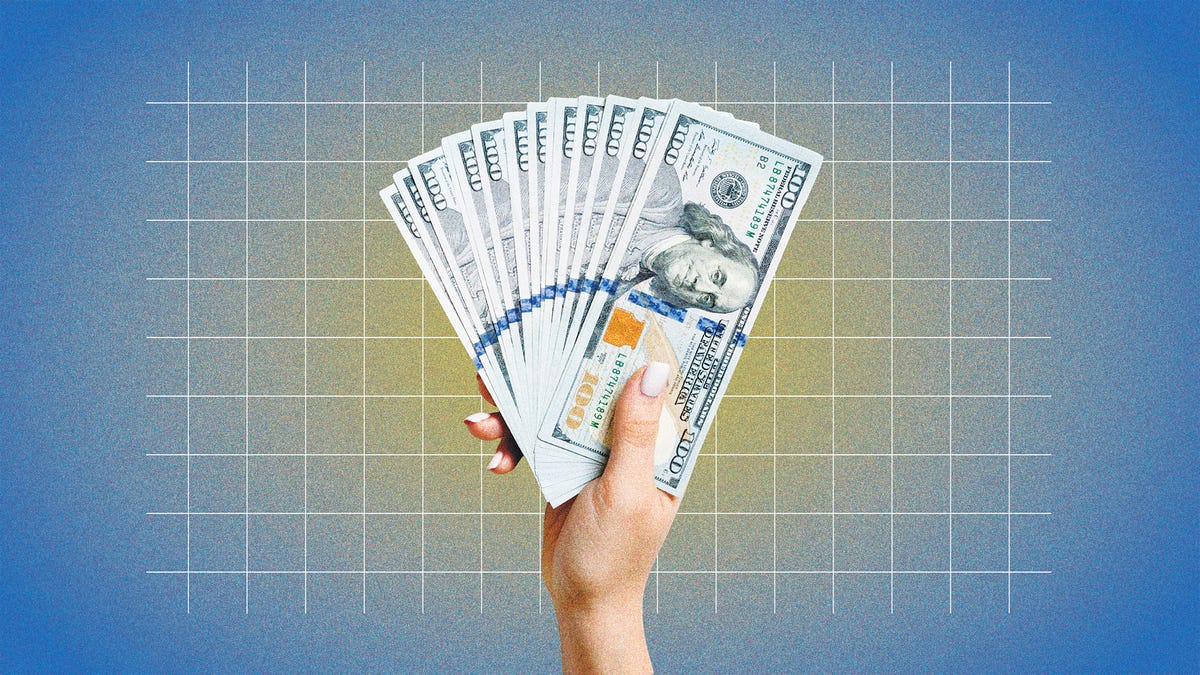My partner and I jumped on Apple Music the day it launched in 2015. We didn't often spend money on streaming services, but Apple offered a free three-month trial we couldn't pass up.
The free period was a way to attract subscribers who would eventually begin paying. Nine years later, my household remains one of those loyal paying subscribers. After those three free months, the price started at $14.99 for our family subscription. It's crept up over the years to $17.99. There's no way Apple would have hooked us with a nearly $20-per-month music subscription back in 2015, but the power of inertia keeps us paying.
This kind of free trial and ever-increasing subscription price is one example of "gray charges," a term credit card experts use to describe those unexpected -- but not fraudulent -- charges that turn up on our bills each month. Here's how to spot gray charges and stop them from running up your credit card bills.
What are gray charges?
Gray charges are transactions you legally authorized, even if you didn't realize you did. They come from the likes of free trials that turn into paid subscriptions, services that gradually creep up in price, automatically renewing services and services that are hard to cancel.
You usually spot gray charges after they've hit your credit card or bank account, which can be an unpleasant shock. If you don't keep a close eye on your finances, you might not even notice them until after you've already been paying for years.

Smart Money Advice on the Topics That Matter to You
CNET Money brings financial insights, trends and news to your inbox every Wednesday.
"When something is advertised as free, it often signals the possibility of hidden fees associated with the subscription," said Uziel Gomez, a financial planner and founder of Primeros Financial. "Watch out for automatic renewals, price increases, hidden charges for premium content, cancellation fees, transaction fees and shipping costs."
Possible sources of gray charges
- Free trials that turn into paid subscriptions.
- Paid subscriptions that increase in price.
- Paid subscriptions and software services that auto-renew.
- One-time purchases that include a subscription that wasn't advertised prominently.
- Subscription services that are difficult to cancel.
- Services with a low introductory price that automatically increases over time.
- Freemium apps or software that require a paid upgrade for certain features.
- Processing and handling fees that are hidden until the point of purchase.
- Subscriptions you no longer use but forgot to cancel.
- Negative-option billing, which requires you to opt out of services rather than into them.
- Free trials that automatically place you in the highest-tier service.
- Duplicate billing if you've accidentally signed up for a service more than once.
More Credit Cards Articles:
- If You Pay for Subscriptions, You Need a Virtual Card. Here's Why
- It's Easy to Accidentally Commit 'Friendly Fraud.' How to Avoid This Serious Credit Card Mistake
- How Major Credit Card Networks Are Using AI to Battle Fraudsters
How to find gray charges on your credit cards
If you've never thought about gray charges before, this is a good time to check your transactions to see what you might have missed.

Smart Money Advice on the Topics That Matter to You
CNET Money brings financial insights, trends and news to your inbox every Wednesday.
1. Review your financial statements
Review your recent credit card and bank transactions online or in their respective apps. Look for charges you weren't expecting or merchants you don't recognize. Then check whether these charges are recurring -- you can typically filter your transaction search by the merchant name.
Subscription management apps like Rocket Money, Hiatus, Bobby and Trim offer to find and help you cancel recurring charges. Also search for app subscriptions on your iPhone or Android phone.
If you use multiple credit cards, keep an eye out for duplicate charges. Maybe you forgot you already signed up for a service with a different card. Or maybe you and your spouse each subscribed to Hulu through different accounts.
2. Research unfamiliar merchants
Once you're aware of the charges, search your email to see if you signed up for something you've forgotten about or visit the company's website to find out if you have an account.
If you don't recognize the merchant name, search online to see if it brings up anything more familiar. Companies often do business under a name that's different from their public brand.
"I signed up for ESPN Plus for my husband, and the bill showed up as 'Disney' on my credit card," said financial services expert Gerri Detweiler. "I don't subscribe to Disney Plus, so I canceled it, and now my husband can't get into his ESPN Plus."
Doing a quick search can help you avoid unwittingly canceling a subscription you wanted to keep, or starting a dispute that costs a small business owner a significant fee.
3. Keep, cancel or dispute charges
Once you know where a charge came from, decide what to do about it.
- If you want to keep the service, plan for the recurring cost alongside other bills and expenses, so you're not surprised next time it comes up.
- If you no longer want the service, cancel it, so you're not charged in the future. You might be able to do this online, or you might have to call the company. Search "cancel [service]" to find contact information. If you cancel a subscription online, you might be directed through a litany of steps that are meant to encourage you to remain subscribed. Sometimes these flows obscure the steps you have to take to complete your cancellation, so read the prompts on the page carefully. If you're already feeling discouraged, don't worry -- some budgeting apps will cancel unused subscriptions for you.
- If you're certain the charge is fraudulent, because you've never done business with the merchant, initiate a dispute through your bank or credit card company. You can usually do this through the company's app or website, or you can call customer service for help.
How to reduce gray charges
Because gray charges aren't fraudulent, you can't simply dispute them and reverse the charge. Try these steps to reduce the cost of gray charges on your credit card:
- Contact small businesses to ask for a refund. Instead of initiating a chargeback that could cost a small business owner a large fee, contact the business directly. By appealing to a real person who's invested in the customer experience of their business, you might get a refund for your surprise charges or an extension of services.
- Cancel or downgrade unnecessary subscriptions. Your needs might be different now from when you signed up, or you might have been automatically upgraded to more service than you need. See if you can downgrade to a free or lower-tier subscription if you don't want to cancel a service altogether.
- Ask for a lower price. Larger companies, like insurance or cable providers, often offer discounts to retain customers. Don't be afraid to contact your providers to let them know you're thinking about canceling and directly ask for a lower price.
How to spot gray charges before they happen
Gray charges are often difficult to recover because you checked the necessary box to agree to the charge. Your best line of defense against these charges is to spot them in advance.
1. Slow down when you sign up
It's easy to miss details, especially when you sign up for a service or buy a product when you're on your phone. Take a moment to read the fine print. The true cost of a product or service is often listed in plain sight but smaller or paler than the "free" offer companies want you to focus on. Read through all the text on a sign-up page, and keep an eye out for asterisks that link to more information.
Be just as diligent when signing up for utilities like phone and cable services. Companies commonly offer a reduced monthly rate for the first six to 12 months, so make sure you know if and when to expect your monthly cost to rise.
Pro Tip:
"To avoid surprises, consider thoroughly examining the website before committing, review the FAQ page and search reviews from other users to uncover any potential issues." -- Uziel Gomez, a financial planner and founder of Primeros Financial.
2. Don't enter your credit card information
If a "free" service requires you to enter credit card information, take that as a sign that you'll almost certainly pay for it eventually. To avoid surprise charges later, avoid entering credit card information when signing up for anything unless you plan to pay for it. Or consider using a virtual card that offers a "one-time use only" option.
3. Set reminders for when trials end
If a free trial requires you to enter credit card information, immediately note when the free or reduced-price trial ends. Trials are usually seven or 30 days, but you might get one of those Apple Music deals that lasts for three months -- plenty of time to forget you ever signed up.
Use your calendar, phone reminders or paper planner to remind yourself a day or two before a free trial ends and a paid subscription begins.
Do the same for quarterly or annual subscriptions you pay for upfront. Those charges are typically much higher, and the time between charges makes it easy to forget they're coming. Set a reminder a few days before the next charge so you can evaluate whether to keep, cancel or downgrade service.
4. Read your emails
Most reputable services notify you before charging your card. You'll probably get emails before a free trial ends, before an annual charge is due, before a price increases and after a charge has gone through.
Emails from brands can seem pesky, especially if you're also bombarded with promotions in your inbox. They might contain important information. (If you're overwhelmed by unhelpful promotional emails, find the unsubscribe link at the bottom before you delete it. That'll remove you from the marketing list without removing you from notifications about your purchases or account.)
Another option to stay on top of notifications is signing up for a separate email account that you only use for subscriptions.
Set a reminder to check your subscription emails at least once a month, so you see notifications about price changes or auto-renewals before they happen.





:quality(85):upscale()/2024/10/31/831/n/49351773/b7bf33836723d2f0643c55.51137847_.jpg)


:quality(85):upscale()/2022/01/10/780/n/1922507/0152c91d61dc7053492389.07772633_.png)
 English (US) ·
English (US) ·